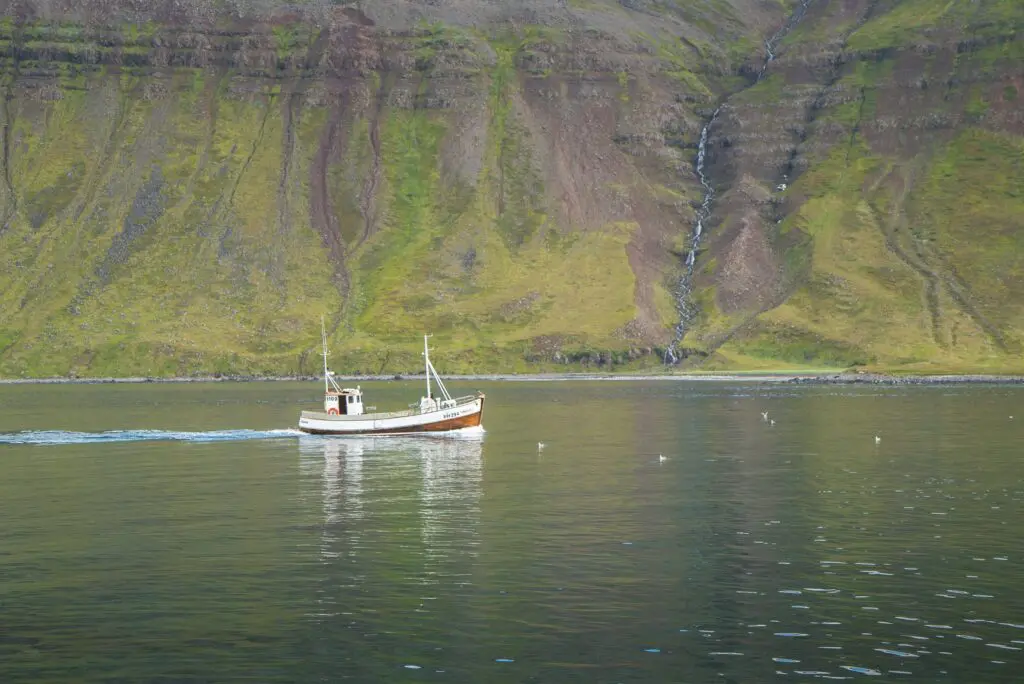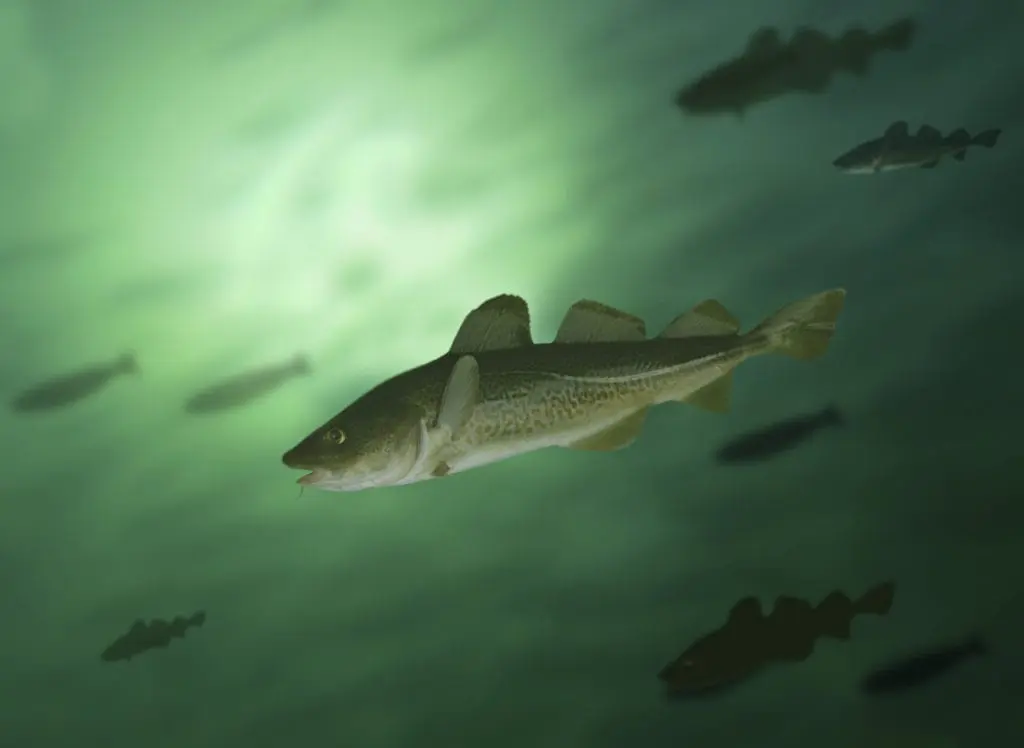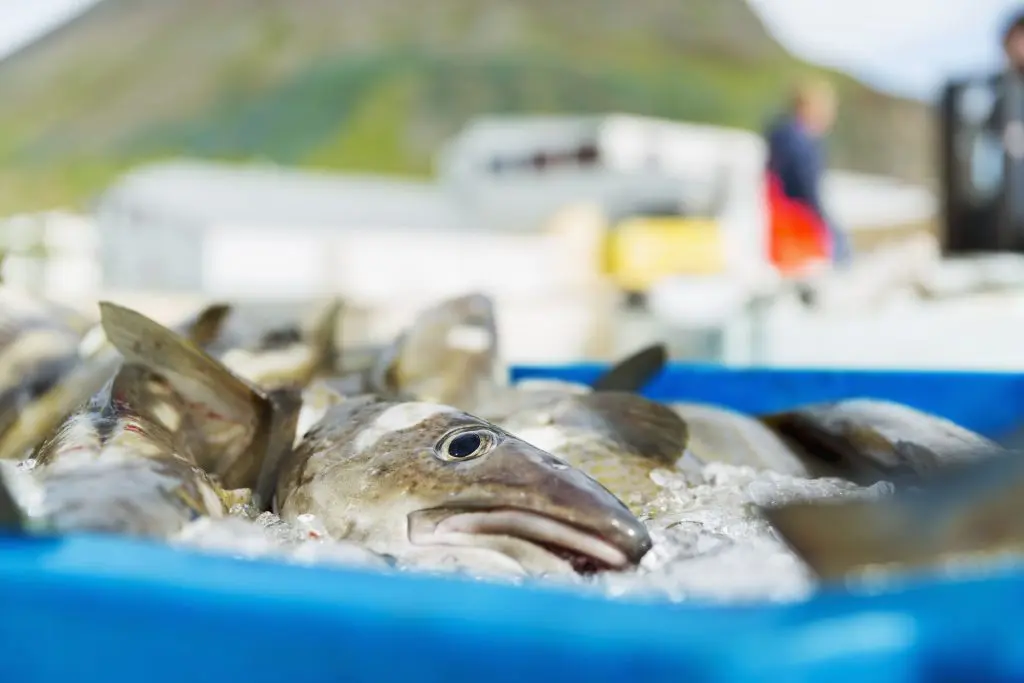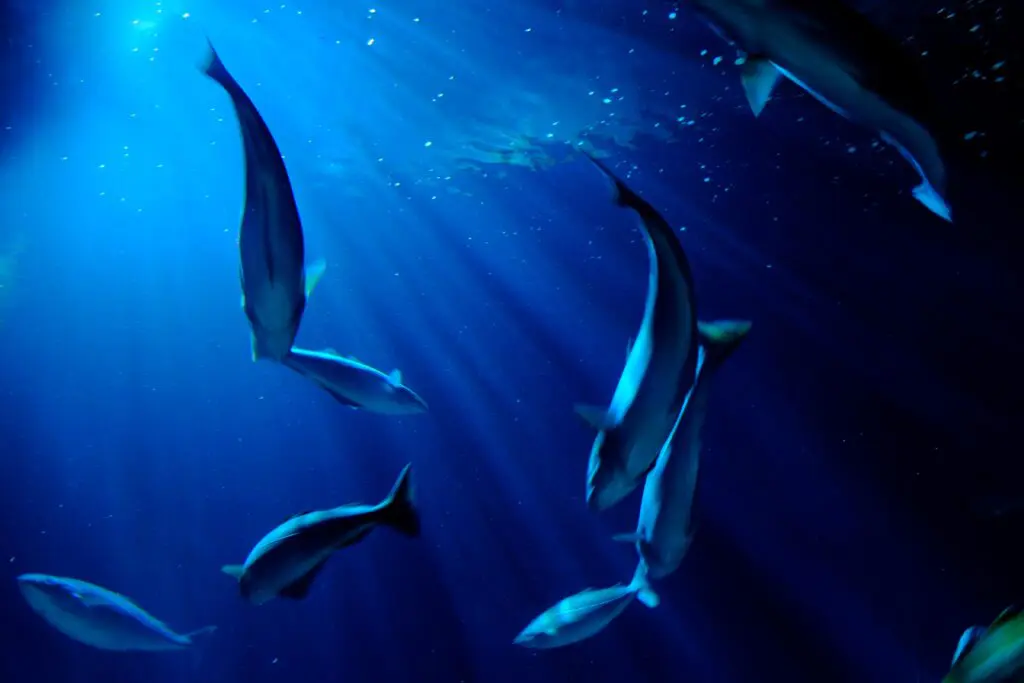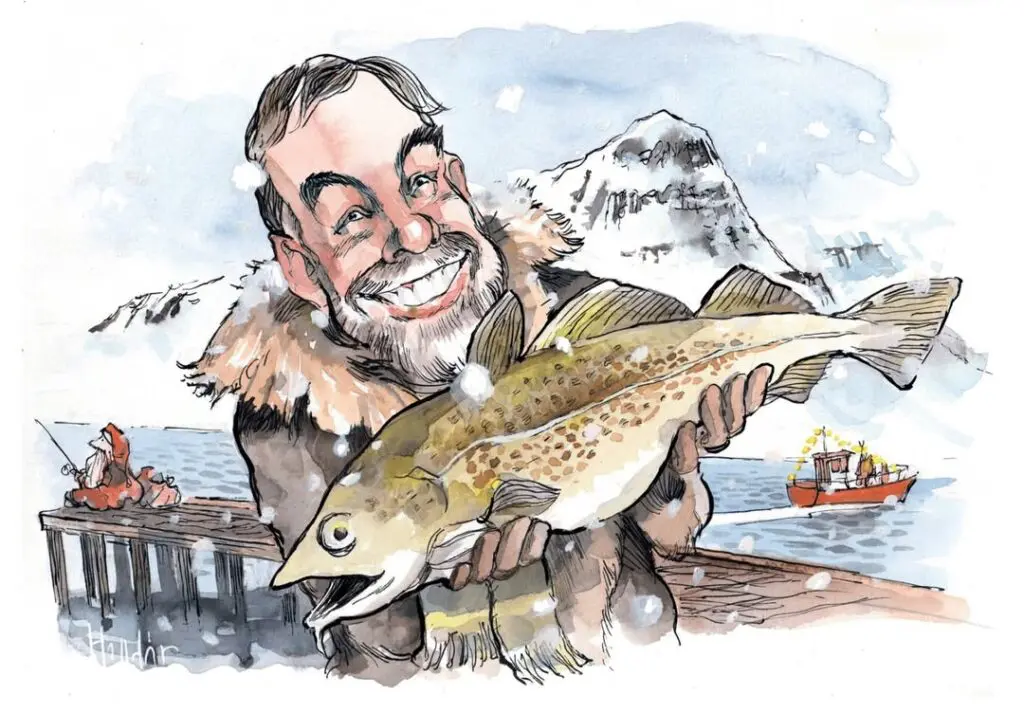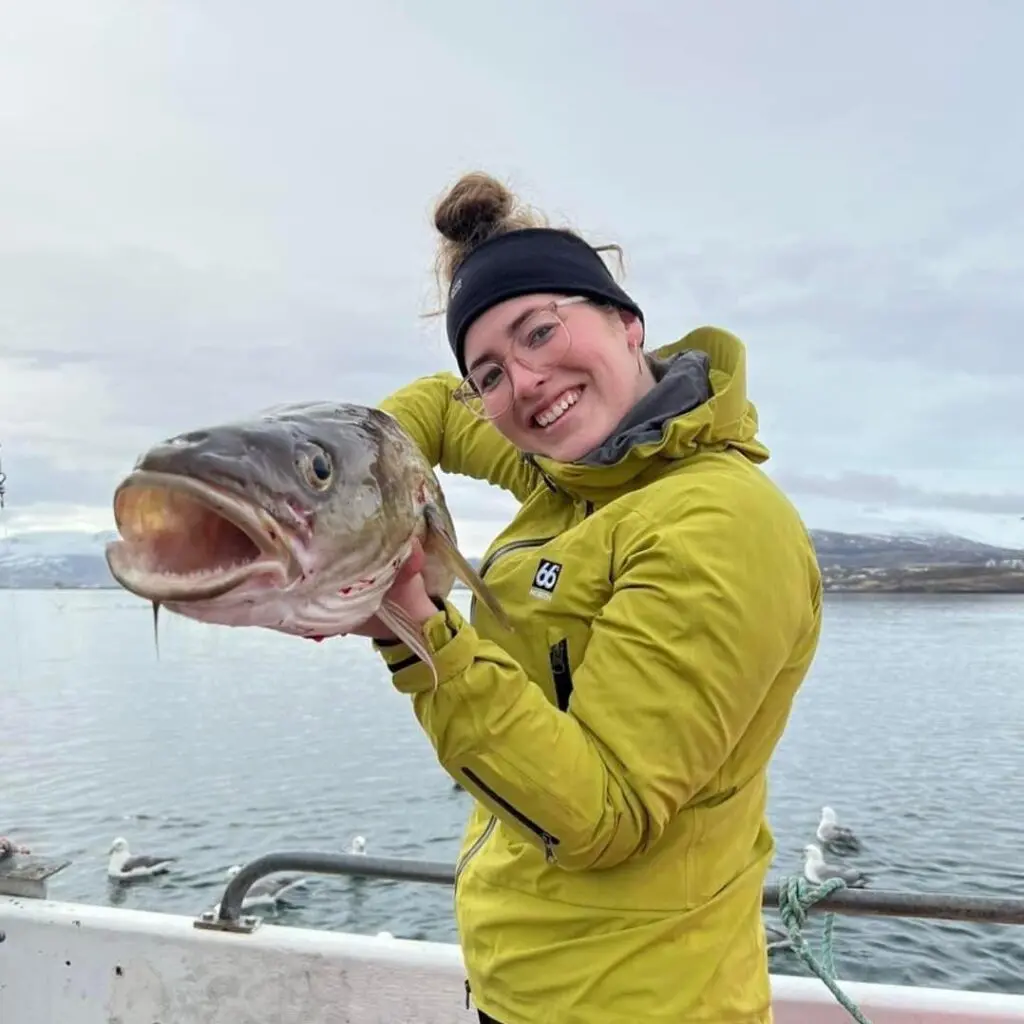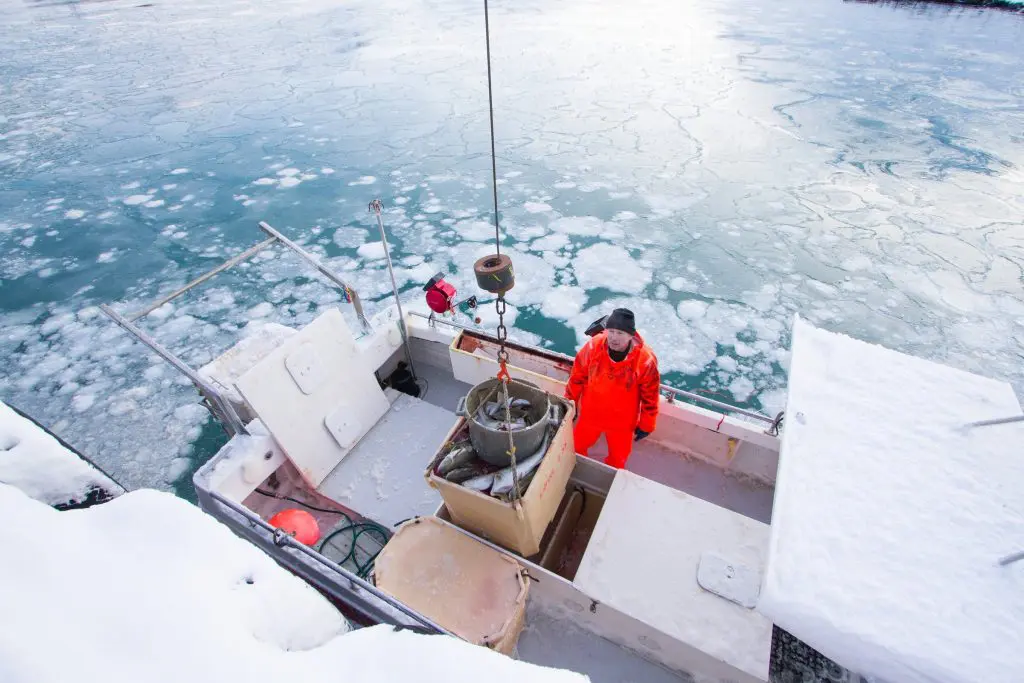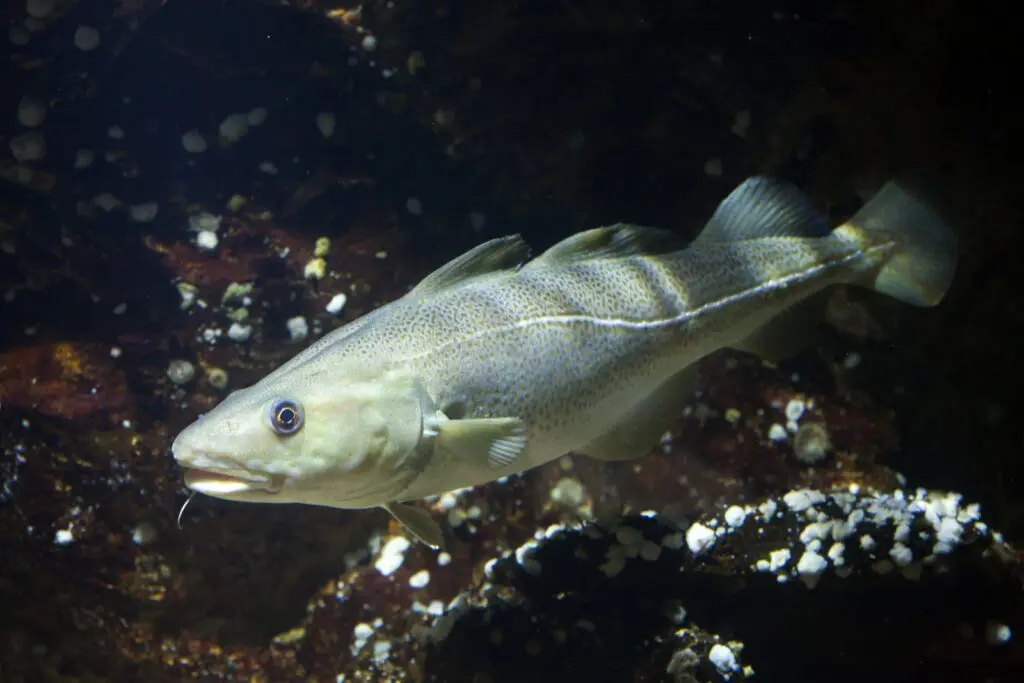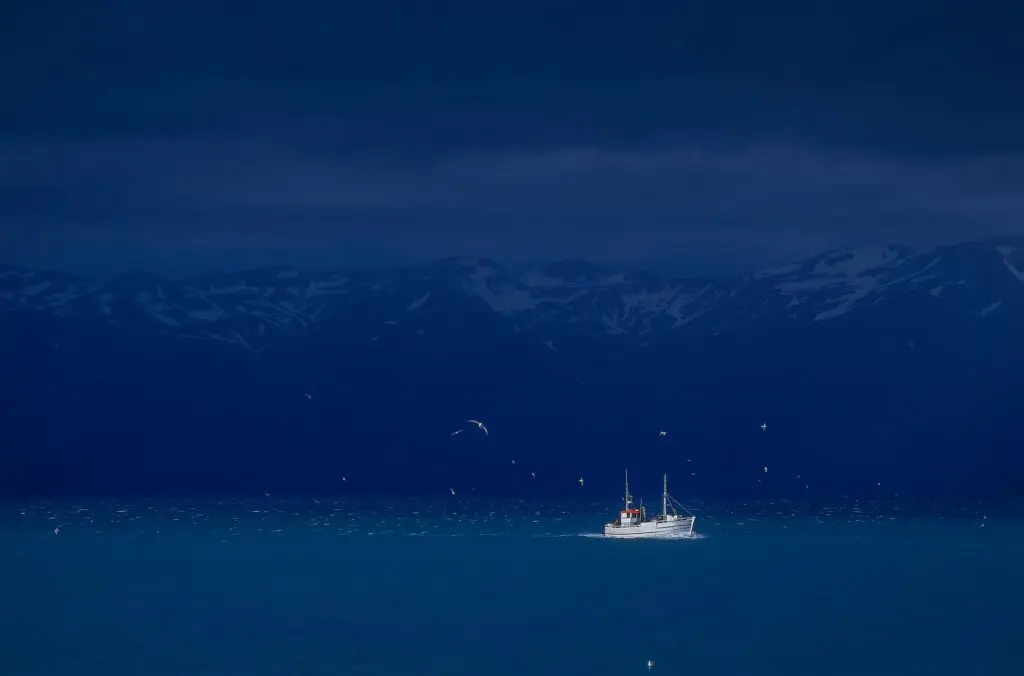The Atlantic cod is easily recognizable by its coloring—ranging from greenish to brown with dark spots along the back and sides, fading to a silvery underside. A prominent lateral line, used to detect movement and vibrations in the water, runs along each side of the body.
Cod are a shoaling species, often forming large groups structured by size. In these schools, the larger individuals act as scouts, leading the group—especially during post-spawning migrations when cod move inshore to feed.
In Icelandic waters, cod are considered a demersal (bottom-dwelling) fish, typically found at depths ranging from 100 to 250 meters, although they can live as deep as 600 meters or more. They inhabit a variety of seabeds, from muddy to rocky bottoms, and even coral-rich areas.
Cod are opportunistic feeders—famously greedy and not picky. They feed on almost anything they can swallow, including smaller cod. Their large mouths, prominent chins with a visible “beard” (a sensory barbel), and streamlined bodies make them effective predators.
These fish can live up to 24 years—some individuals have even reached 29 years of age. They can grow to impressive sizes, with many reaching lengths of over 100 cm. In fact, the largest recorded cod caught in Icelandic waters was 186 cm long, caught in 1998.
In Iceland, cod (þorskur) holds cultural and economic importance and even appears on the Icelandic krona coin. It is both a national symbol and a key species in marine ecosystems.
Kerecis Innovation: The Healing Power of the Atlantic Cod
Kerecis, is an innovative biotechnology company, that uses cod fish skin in its pioneering approach to support tissue regeneration and wound healing. Kerecis is based in Iceland, utilizes the unique properties of cod fish skin to create medical products, particularly for treating chronic wounds, burns, and surgical wounds.
Cod fish skin is homologous to human skin, making it an ideal material for promoting natural healing. Cod fish skin avoids the risks associated with mammalian-derived products, such as disease transmission or immune rejection. Additionally, fish skin is more environmentally sustainable as it repurposes byproducts from the fishing industry.
Kerecis’s fish-skin-based products have shown remarkable results, accelerating wound healing and improving outcomes, especially for patients with diabetic foot ulcers, venous leg ulcers, and other hard-to-heal wounds. The product provides a unique combination of biological and mechanical support that enhances the body’s natural healing mechanisms.
Quick Facts About Atlantic Cod
- Species: Atlantic cod (Gadus morhua) is one of three cod species in the Gadus genus, alongside Pacific and Greenland cod.
- Range: Found throughout the cold waters of the North Atlantic, from North America to northern Europe.
- Size: Typically 50–100 cm (20–40 in), but can reach up to 2 meters (6.5 ft) and over 90 kg (200 lbs).
- Color Phases: Can appear gray-green or reddish-brown, depending on depth and habitat.
- Texture & Taste: Prized for its mild flavor and flaky, firm white meat.
- Spawning: Females can release up to 9 million eggs in a single spawning season.
- Growth: Juvenile cod grow quickly in their first few years, reaching sexual maturity between ages 2 and 4.
- Lifespan: Some Atlantic cod live over 20 years; rare individuals have reached 29.
- Habitat: Demersal fish—live near the seafloor, often around gravel, sand, or rocky bottoms.
- Depth Range: Commonly found between 100–250 meters (330–820 ft), but can live as deep as 600 meters (1,970 ft).
- Juvenile Zones: Young cod often stay in shallow waters (10–30 meters) for protection and warmer temperatures.
- Feeding: Opportunistic predators—they eat fish, crustaceans, and sometimes even smaller cod.
- Behavior: Cod form large schools structured by size, with bigger fish often leading during feeding migrations.
- Migration: After spawning in deeper waters, cod migrate inshore to feed during summer months.
- Adaptability: Cod are tolerant of a wide range of seafloor types, from mud to coral-covered terrain.
- Economic Value: Cod is a major commercial species and has supported fisheries for centuries.
- Cultural Role: Iconic in regions like Iceland, Newfoundland, and Portugal, where it features in cuisine, currency, and folklore.
Need more information?
From the town of Ísafjörður in northwest Iceland, Kerecis develops, manufactures, and distributes patented fish-skin medical devices that support soft tissue regeneration in the body, with regulatory approvals in the United States, Europe, and beyond.
